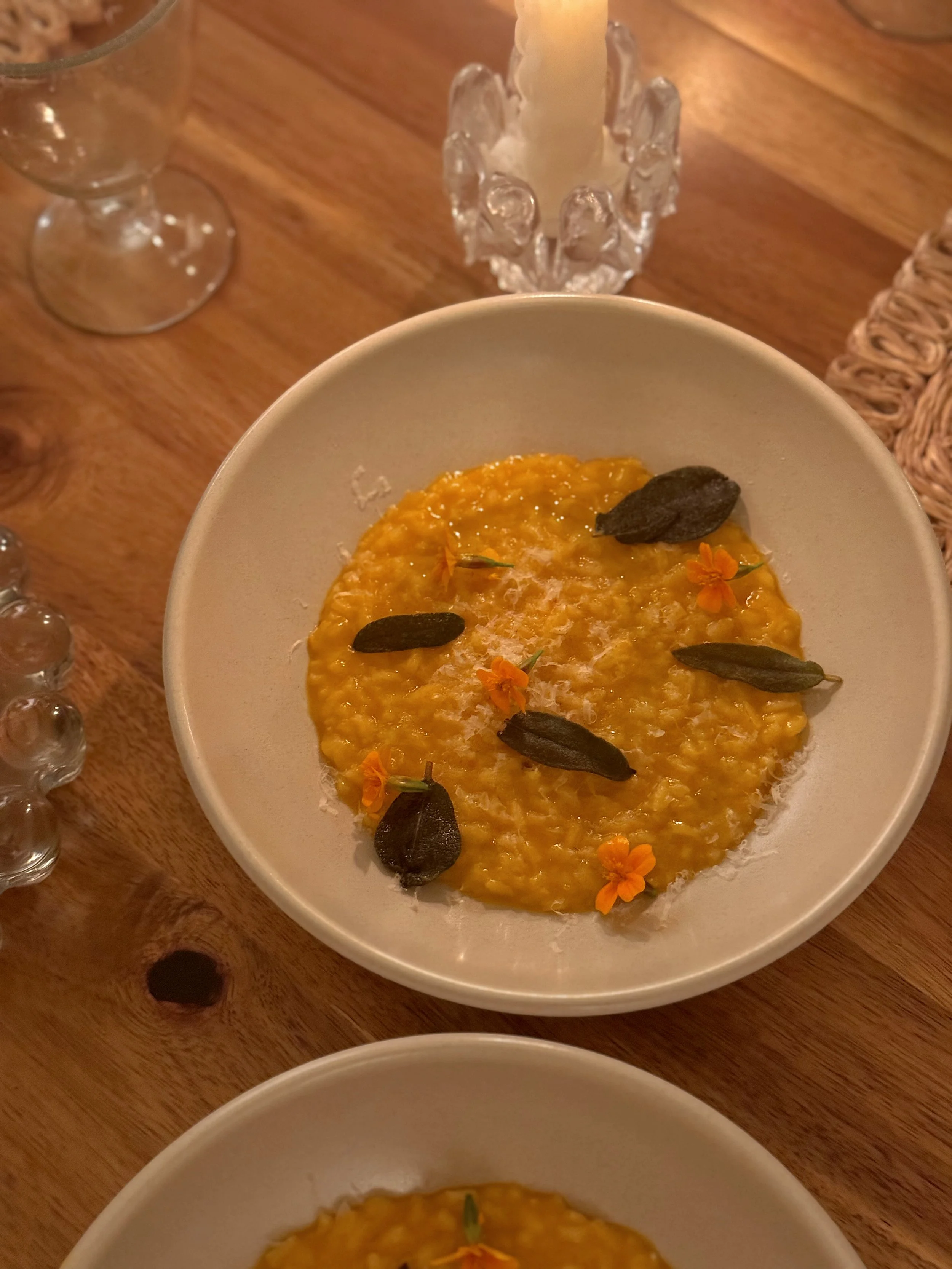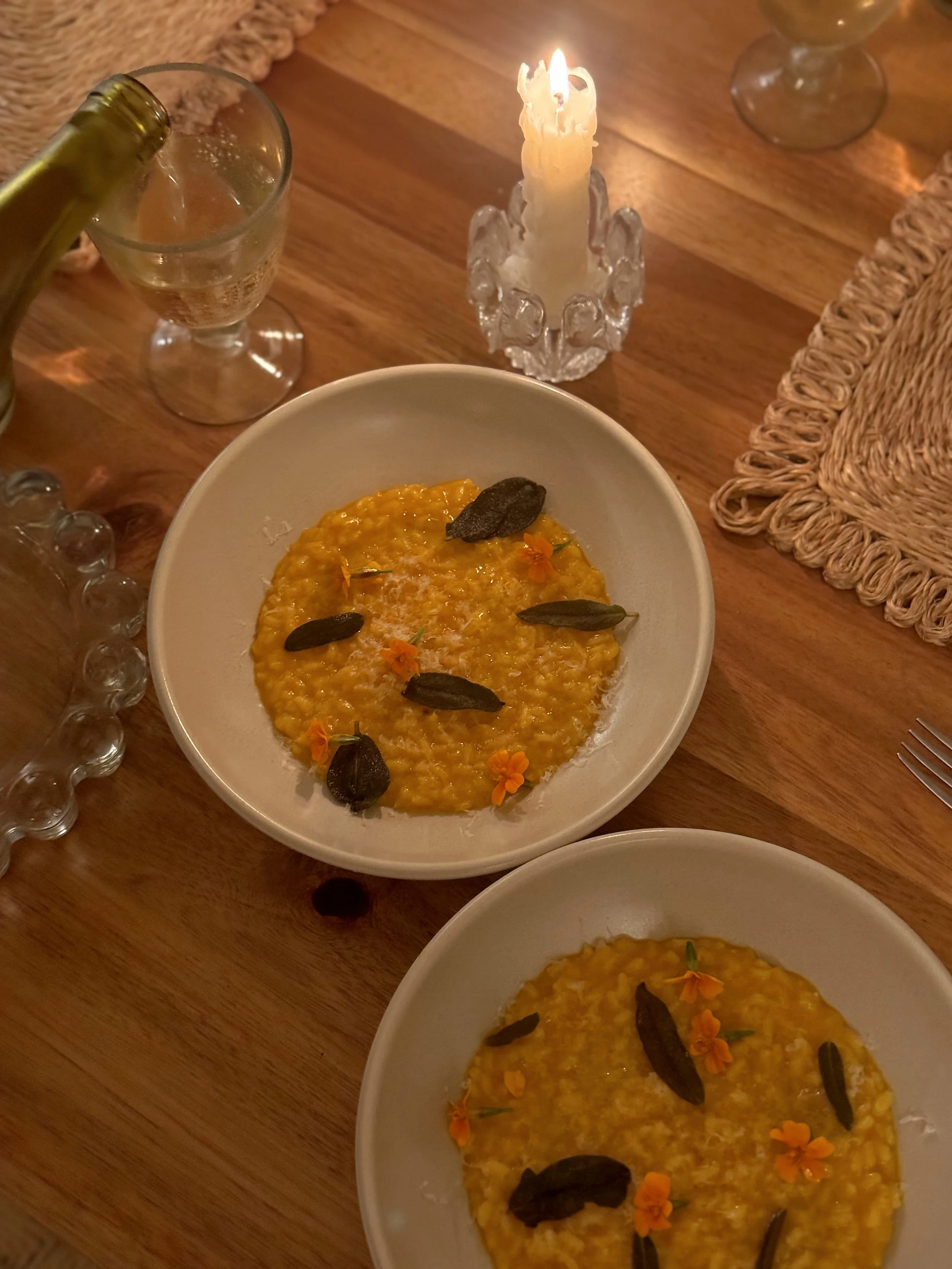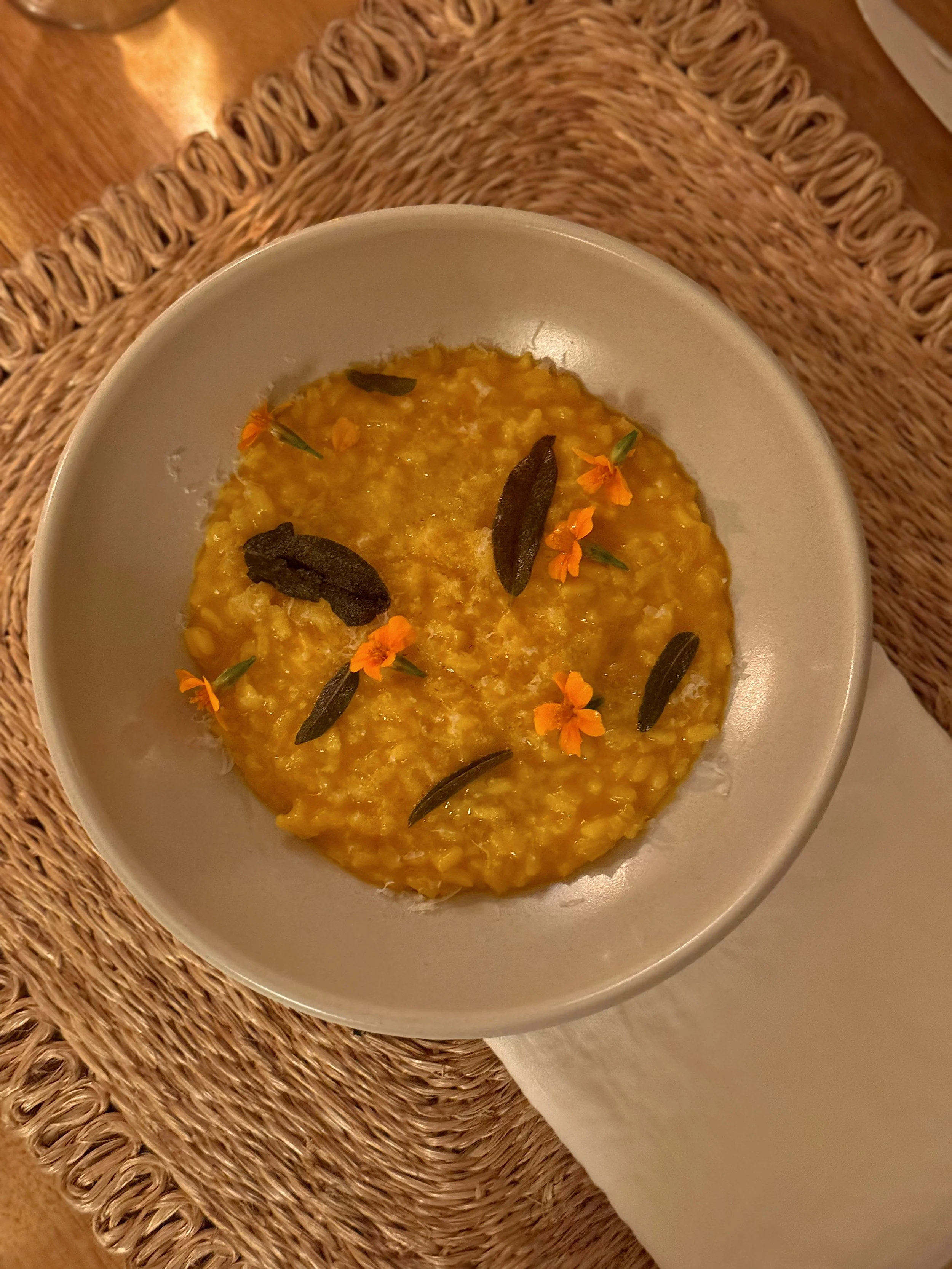Fall Squash Risotto with Crispy Sage
The minute the leaves start to turn and it gets chilly out, I immediately start craving comfort food and one of my absolute favorite comfort meals is risotto. I’ve always been such a fan of risotto and it was one of my favorite units in culinary school — it was so interesting to learn the “why” behind each of the steps and I loved that we experimented with different variations/mix-ins. In case you’re a risotto fanatic like me, I have four other risotto recipes on my site that you may want to bookmark — three spring versions here, here and here, and this late summer version!
This fall squash risotto with crispy sage may have to be one of my favorite flavor combinations. It’s delicious and easy and I love that you can use whatever squash you have on hand (i.e. kabocha, pumpkin, butternut squash, acorn squash, etc.). I hope you give it a try this fall and drop me a line if you make it!
Serves 6-8
INGREDIENTS
For the crispy sage:
Sage leaves (I figure ~4-5 leaves per plate of risotto, so about ~24-30 total leaves for the full recipe)
3 Tbsp salted butter
Avocado oil (or any neutral, high smoke point oil)
Kosher salt
For the risotto:
2 quarts stock (I prefer chicken stock but you can use vegetable too)
6 Tbsp butter, divided (can use salted or unsalted)
2 medium shallots or 1 medium yellow onion, minced
2 cups Arborio or Carnaroli rice
1/2 cup white wine (any dry, white wine works)
1 cup grated Parmesan cheese* + more to finish
1.5 cups squash puree**
Kosher salt
Freshly ground pepper
METHOD
Make the crispy sage:
Pick off the leaves of the sage from the sprigs. Heat the butter in a large skillet over low heat, then add avocado oil until you have ~1/4 of an inch of the butter/oil mixture in your pan (the amount of oil you add will vary based on the diameter of your pan). Add the sage leaves, ensuring they’re not overlapping with one another.
Turn the heat up to medium, allowing the sage to fry for 1-2 minutes on each side, flipping with tongs, until they’re nice and crispy. You may need to adjust the heat to ensure you don’t burn the butter.
Transfer to a paper towel-lined plate, sprinkle with a little bit of kosher salt. They will crisp up as they sit. In the meantime, make your risotto.
Make the risotto:
Bring the stock up to a simmer in a large pot on the back burner. Turn off the heat and put the lid on to keep warm.
Meanwhile, heat a large saute pan over medium-low heat and add 4 Tbsp of the butter. Once the butter is melted, add the shallot or onion and a pinch of kosher salt. Cook until the onion is soft but not brown, 2-3 minutes, stirring occasionally.
Add the rice to the softened shallots or onions. Stir to coat the rice with the butter and cook for a couple of minutes until the rice has turned opaque. You don’t want to brown the rice, so turn down the heat, if necessary.
Add the wine and stir. Once the rice has absorbed the wine, add a ladle-full (about 1 cup) of the warm stock. Stir every couple of minutes. The heat should be medium-low at this point. You want the liquid to be gently simmering. Once the majority of the stock has been absorbed by the rice, add another ladle-full of stock.
Continue this process – adding a ladle of stock, stirring often but not constantly, and waiting for the rice to almost completely absorb each addition of stock before adding the next. Do this until all of the warm stock has been added and absorbed and the rice is cooked to al dente (has a little bit of a bite to it). This will take 20-30 minutes. See the notes section below for what the final product should look like!
Turn off the heat and stir in the grated Parmesan cheese, remaining 2 Tbsp butter, and reserved squash puree. Add kosher salt, freshly ground pepper, to taste.
Serve in bowls topped with the crispy sage and more parmesan cheese. Enjoy!
NOTES
*You may need to adjust the amount of parmesan cheese you add, depending on how sweet your squash is. I personally like to add a good amount of parmesan cheese so you get that nice juxtaposition of sweet from the squash and savory from the parmesan, so taste your risotto and add more parmesan, if needed.
**To make the squash puree:
Preheat your oven to 425 degrees F.
Cut your large squash of choice in half (I used Kabocha squash but you can use honeynut squash, butternut squash or even a pumpkin).
Season with kosher salt and olive oil all over, rubbing it in on all sides of the squash.
Lay the squash, cut side down, on a large parchment-lined sheet tray and bake for 45 minuts to one hour, until you’re easily able to insert a paring knife with no resistance into the thickest part of the squash.
Allow to cool completely, then flip over the squash and scoop out the seeds (should be super easy once baked!).
Scoop out the flesh of the squash and transfer to a blender. Add a little bit of water, if needed, to help the mixture blend easier and blend until completely smooth.
You can use this for this recipe along with pies, pasta dishes, soups (just add broth to the puree until you reach your desired consistency and season!), etc. You won’t need the full amount of this puree for this risotto recipe.
I always include these notes from culinary school in all of my risotto recipes — I think these nuggets are super valuable and they help you achieve restaurant-quality risotto at home!
Butter – risotto is a traditional Northern Italian dish and Northern Italy is green and lush, which makes it a prime place for cattle + livestock to live. Because of this, they have more access to milk (and butter), so Northern Italian dishes traditionally use butter as the fat. This is why a traditional risotto is made with butter instead of olive oil. You can of course use olive oil if you prefer or have it around but thought this was really interesting!
Rice – you want to use a short grain white rice for risotto. The short grain rice has a lot of starch content and it can absorb a lot of liquid. Both are key factors to a creamy, luscious risotto. The two more widely available types of short grain rice in the US are Carnaroli (my personal fav!) and Arborio.
Coating the rice in butter – it’s really important to cook the rice in the butter/softened onion mixture for a few minutes (until the rice grains are white/opaque) before adding the wine and broth. That said, you don’t want to brown the rice during this process, so adjust the heat accordingly. By coating the rice in the fat for a little bit, you’re creating a barrier of butter on the outside of the rice, which helps the rice slowly absorb the broth over the course of cooking. This slow absorption of broth is key to a creamy end product.
Stir often, not constantly – risotto is so creamy and luscious because you’re agitating the rice grains as you stir them, releasing their starches. That said, if you stir the rice excessively, it will end up too thick and gummy by the end. You want to stir the risotto every couple of minutes (to prevent sticking and uneven cooking) but you can walk away for a second in between stock additions and let it do its thing too! The end goal (for a traditional risotto) is that you want to be able to see the liquid between the grains of rice in the final product. The risotto should spill out a little when you plate it – it shouldn’t stay put in a thick glob. All that said, if your risotto ends up a little thicker, that’s totally OK – it’ll taste delicious regardless!




